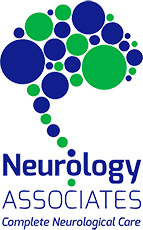Myasthenia Gravis: A Guide to Navigating Muscular Weakness
This article on Myasthenia Gravis was originally published in December 2018 and has been updated with the latest information and developments as of March 2024.
Myasthenia gravis (MG), a term that translates to “grave muscular weakness,” is a condition that can be perplexing and concerning for those diagnosed with it. The sudden clarity that comes with the diagnosis can be overwhelming, as one begins to understand the reasons behind symptoms like jaw muscle fatigue during eating, which improves after rest.
This autoimmune neuromuscular disorder is characterized by the fluctuating weakness of voluntary muscle groups and can affect any muscle that is under voluntary control. It is relatively rare, impacting approximately 20 in 100,000 individuals in the United States. Despite its rarity, awareness and understanding of myasthenia gravis are crucial for managing the condition effectively.
DEFINING MYASTHENIA GRAVIS
Myasthenia gravis is identified as a neuromuscular disorder. It presents to the sufferer as long-term weakness in the muscles used for movement, also called the skeletal muscles.
It’s considered the most common primary disorder of the body’s neuromuscular transmission according to the Myasthenia Gravis Foundation of America. The hallmark of MG is muscle weakness that worsens with activity and improves with rest. This can manifest in various ways, from ocular muscles causing drooping eyelids or double vision to more generalized weakness impacting speech, chewing, swallowing, and even breathing.
WHO CAN BE AFFECTED?
Myasthenia gravis can affect anyone, however the National Institute of Health found that some demographics are at a higher risk, such as men aged 50-70 and women aged 20-40.
A baby whose mother has myasthenia gravis may exhibit neonatal myasthenia, which is temporary but can be life-threatening. It is neither contagious nor inherited.
CAUSES OF MG
A neuromuscular disorder, MG is thought to be caused by autoimmune disfunction. This happens when your body starts attacking healthy cells. To tell the muscles to work, nerves send messages through receptors. A chemical called acetylcholine delivers this message. When this chemical binds to a nerve receptor, that’s when the muscles contract. People with MG don’t have enough acetylcholine receptors because the immune system attacks, blocks, and destroys acetylcholine receptors.
SYMPTOMS OF MGmuscula
In many cases, the sudden onset of this condition is marked by slurred speech, difficulty swallowing, and weakness in the eye muscles. It can also include:
- Double or blurred vision
- Drooping of eyelids
- Changes in facial expressions
- Shortness of breath
- Swallowing difficulties
- Weakness in the fingers, arms, legs, hands, and neck
- Impaired speech
Since these symptoms are also present in other diseases, arriving at a correct diagnosis can be difficult. Diagnosis and treatment require the expertise of a neurologist, who may conduct a series of tests to confirm the presence of the condition. These tests can include blood analysis, electromyography, and imaging studies to assess the communication between nerves and muscles.
Treatment options vary depending on the severity and presentation of the condition but may include medications like cholinesterase inhibitors, immunosuppressants, and therapies such as plasmapheresis or intravenous immunoglobulin therapy. In some cases, surgical intervention to remove the thymus gland, which is thought to play a role in the autoimmune response, may be recommended.
MYASTHENIA GRAVIS IS MANAGEABLE
There is no cure yet for myasthenia gravis. Living with MG means adapting to the fluctuating nature of the disease and understanding one’s limits. It requires a collaborative approach to care, often involving a team of healthcare professionals, including neurologists, therapists, and specialized nurses.
For those in Virginia seeking guidance, Dr. Sarbjot Dulai represents a beacon of knowledge and support. With a trusted neurologist’s care, patients can navigate the complexities of MG difficulty and lead fulfilling lives.
If you or someone you know is experiencing symptoms suggestive of myasthenia gravis, it is imperative to seek medical attention. Early diagnosis and treatment can significantly improve the quality of life for those affected by this condition. Remember, you are not alone in this journey, and help is available to manage the challenges that come with this disease.
Resources:
National Institute of Health – Health Information on Myasthenia Gravis
Myasthenia Gravis Foundation of America – Learn More About MG














